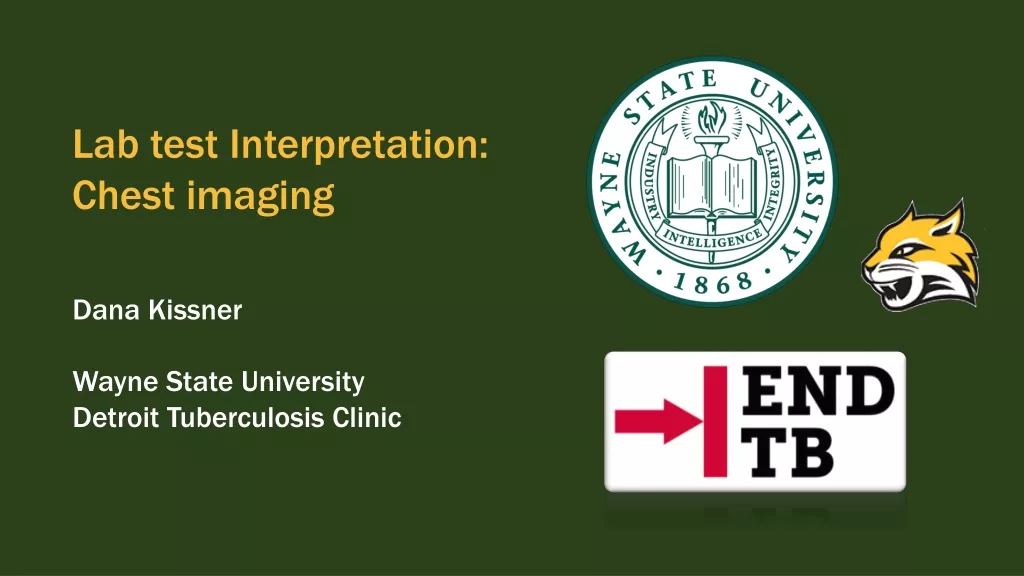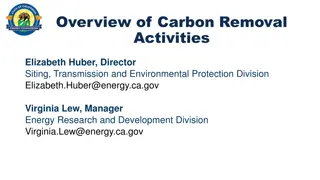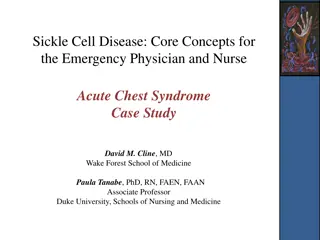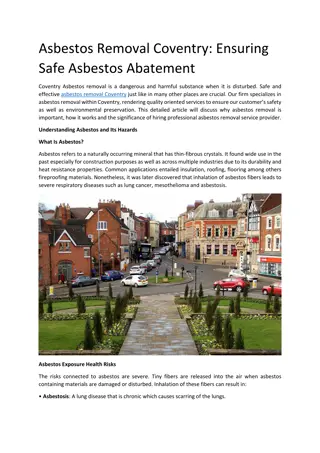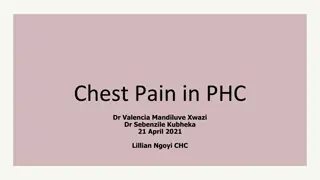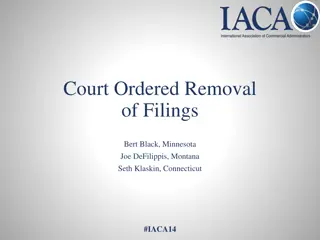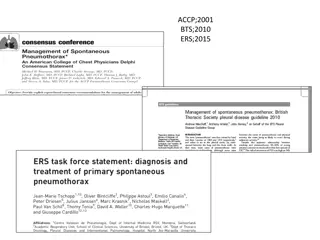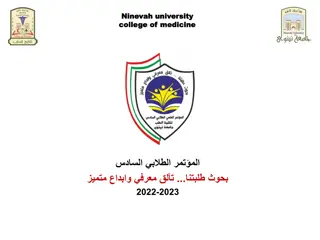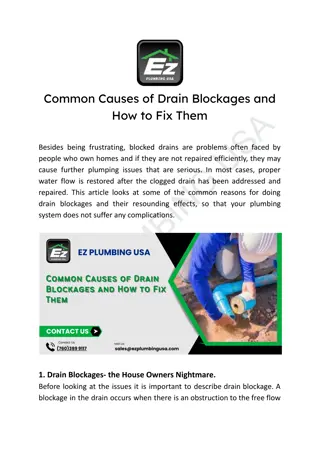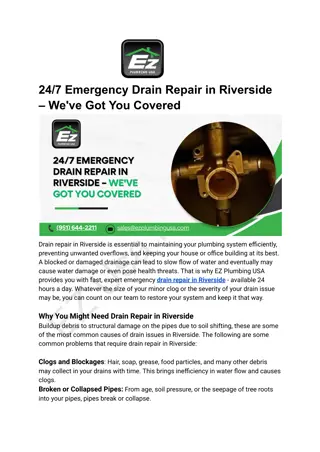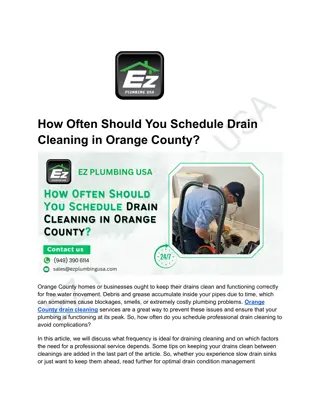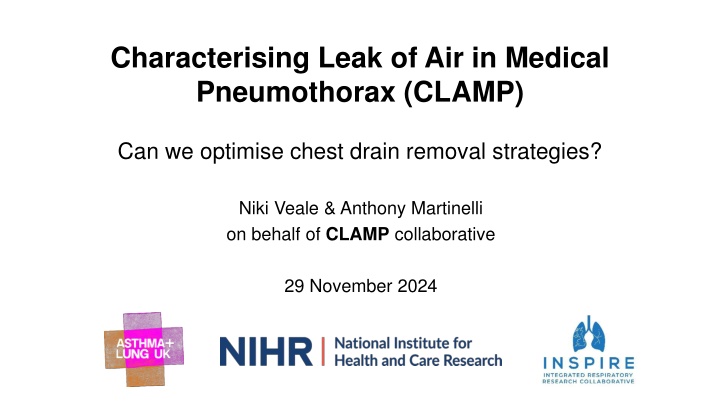
Optimising Chest Drain Removal Strategies in Pneumothorax
This research initiative, Characterising Leak of Air in Medical Pneumothorax (CLAMP), aims to address the lack of evidence in chest drain removal for pneumothorax and the recurrence rates associated with it. The project delves into the practice variations and potential benefits of chest drain clamping prior to removal to reduce recurrence risk. Through data capture and analysis, the study seeks to inform better intervention strategies and outcomes in managing pneumothorax, with a focus on patient safety and efficacy. Supported by NIHR and Asthma + Lung UK, this collaborative effort brings together specialists in respiratory medicine to drive high-quality research projects for improved patient care and outcomes.
Download Presentation

Please find below an Image/Link to download the presentation.
The content on the website is provided AS IS for your information and personal use only. It may not be sold, licensed, or shared on other websites without obtaining consent from the author. If you encounter any issues during the download, it is possible that the publisher has removed the file from their server.
You are allowed to download the files provided on this website for personal or commercial use, subject to the condition that they are used lawfully. All files are the property of their respective owners.
The content on the website is provided AS IS for your information and personal use only. It may not be sold, licensed, or shared on other websites without obtaining consent from the author.
E N D
Presentation Transcript
Characterising Leak of Air in Medical Pneumothorax (CLAMP) Can we optimise chest drain removal strategies? Niki Veale & Anthony Martinelli on behalf of CLAMP collaborative 29 November 2024
Chest drain removal in pneumothorax is not well-evidenced Pneumothorax recurrence rate is 4.1-6.7% within 7 days of discharge Digital suction devices are expensive, may not be available, and may not help in PSP Significant practice variation with little consensus on clamping No BTS position pleural guidelines suggest further research needed into utility of clamping trials Baumann MH et al.; Chest 2001 Hallifax RJ et al.; JAMA 2018 Asciak R et al.; Thorax 2023
Initial project launched via INSPIRE Capture data retrospectively on chest drain removal practice in PSP/SSP and outcomes Inform relevant intervention and primary/secondary outcomes for potential trial National network for specialist trainees in respiratory medicine to develop, set-up and support high quality, trainee led research projects Supported by both NIHR and Asthma + Lung UK
Initial project launched via INSPIRE Our questions Capture data retrospectively on chest drain removal practice in PSP/SSP and outcomes In patients with pneumothorax, does chest drain clamping prior to removal reduce risk of pneumothorax recurrence? Inform relevant intervention and primary/secondary outcomes for potential trial Is chest drain clamping safe? National network for specialist trainees in respiratory medicine to develop, set-up and support high quality, trainee led research projects therefore reduce recurrence? Could digital suction devices impact decision making and Supported by both NIHR and Asthma + Lung UK
Broad inclusion criteria, capturing all spontaneous pneumothorax Inclusion criteria Any inpatient 16 yo with a chest drain inserted to manage pneumothorax Chest drain removed as an inpatient or had an inpatient trial of clamping Exclusion criteria Traumatic, iatrogenic or post-op pneumothorax Bilateral pneumothorax Death with chest drain in situ without clamping trial Inadvertent removal of chest drain Patient data Demographics Respiratory comorbidities Clinical progress during admission
Outcomes that are important to patients Pneumothorax recurrence 7 and 30-day recurrence following chest drain removal or clamping trial Readmission for management of pneumothorax Total number of pleural procedures if readmitted for recurrence Length of stay during index and subsequent admissions
Cases were collected from 27 centres Top 10 contributing trusts labelled
74 episodes removed 8 Other aetiology 5 Admission dates out of bounds 28 Onwards referral, CD in situ 13 Deceased, CD in situ 9 Accidental removal 4 Ambulatory pathway 7 Repetition 865 episodes Submitted 791 episodes Clamped 258 episodes Not clamped 533 episodes No recurrence 466 episodes Air leak identified 24 episodes No air leak identified 234 episodes No recurrence 23 episodes Early recurrence 41 episodes Late recurrence 26 episodes Early recurrence 1 episode No recurrence 199 episodes Early recurrence: Late recurrence: day 0-7 day 8-30 Early recurrence 21 episodes Late recurrence 14 episodes
The CLAMP population is broadly representative Demographics No clamp (n=533) 55 (34-72) Total (n=791) 54 (34-70) Clamp (n=258) 53 (33-67) Median age (IQR), years PSP vs SSP No. (%) PSP SSP 289 (36.5%) 502 (63.5%) 93 (36.0%) 165 (64.0%) 196 (36.8%) 337 (63.2%) Current Ex Never Unknown 321 (40.6%) 269 (34.1%) 167 (21.1%) 33 (4.2%) 98 (38.0%) 90 (34.9%) 58 (22.5%) 12 (4.7%) 223 (41.9%) 179 (33.6%) 109 (20.5%) 21 (3.9%) Smoking status No. (%) Wall Digital No suction 187 (23.6%) 58 (7.3%) 546 (69.0%) 75 (29.1%) 24 (9.3%) 159 (61.6%) 112 (21.0%) 34 (6.4%) 387 (72.6%) Suction No. (%)
Clamping is not associated with reduced rate of recurrence Clamping vs. no clamping Total (n=791) 63 (8.0%) 20 (31.7%) 17 (27.0%) 60 (95.2%) 40/548 (7.3%) Clamp (n=258) 22 (8.5%) 6 (27.3%) 2 (9.1%) 21 (95.5%) 14/161 (8.7%) No clamp (n=533) 41 (7.7%) 14 (34.1%) 15 (36.6%) 39 (95.1%) 26/387 (6.7%) p=0.52 Recurrence 7 days No. (%) p=0.79 p=0.78 p=0.04 p=1.00 Proportion PSP Proportion current smokers Proportion requiring intervention Excluding suction (n=548) Recurrence 8-30 days No. (%) 40 (5.0%) 14 (5.4%) 26 (4.9%) p=0.67 Recurrence 30 days No. (%) 103 (13.0%) 36 (14.0%) 67 (12.6%) p=0.08* Length of stay (IQR), days 5 (3-9) 6 (3-11) 5 (3-9) p=0.0002* Length of time chest drain in situ (IQR), days 4 (2-6) 4 (2-8) 3 (2-6) * Fisher s exact test
Digital suction devices do not appear to reduce rate of recurrence Suction (with or without clamping) Digital suction (n=58) 3 (5.2%) 6 (10.3%) Wall suction (n=187) 20 (10.7%) 28 (15%) No suction (n=546) 40 (7.3%) 69 (12.6%) p=0.24 p=0.59 Recurrence 7 days No. (%) Recurrence 30 days No. (%) Suction with clamping (n=258) Digital suction (n=24) 0 (0.0%) 1 (4.2%) No suction (n=159) 14 (8.8%) 23 (14.5%) p=0.17* p=0.29* Recurrence 7 days No. (%) Recurrence 30 days No. (%) * Fisher s exact test
Adverse events limited with clamping trials 6 (2.3%) adverse events reported: 1 case consistent with potential tension pneumothorax Resolved by unclamping 1 case of worsening surgical emphysema 4 reported new symptoms during their clamping trial
Conclusions from the largest ever study of chest drain removal UK respiratory residents can deliver high quality data Clamping trials are safe with 0.4% risk of precipitating tension Clamping was not associated with reduced recurrence of pneumothorax, but did trend towards prolonged length of stay Digital suction devices did not reduce recurrence (although numbers small), but belt and braces approach of digital suction and clamping did have very low rates of recurrence
Acknowledgements Cambridge University Hospitals Akhilesh Jha Jurgen Herre Stefan Marciniak Mid and South Essex Joyce O. S. Cheng David Morrow May Sam Irfan Saleem Norfolk and Norwich Dheeraj Sethi Phillip De Souza Khaing Zar Mon North Tees and Hartlepool Lewis Standing Wei Hann Ong Calderdale and Huddersfield M. Salman Rashid South Tyneside and Sunderland Benjamin Pippard Seemab Paul Waheed Mohammad Oxford University Hospitals Matthew Hayes Clodagh Holmes Abeer Saad Fatima Al-Arrayed Beenish Iqbal Rob Hallifax Najib Rahman Maidstone and Tunbridge Wells David Henshall Tobias Smitherman-Cairns Katherine Smith United Lincolnshire Hospitals Mohamed Gadallah Royal Devon University Healthcare Ben Rowlands Samantha Bosence James Paget University Hospitals Ahmed Salih Newcastle Upon Tyne Hospitals Daniel Mitchell North Cumbria Integrated Care Eve Lynn Koh Ching Khai Ho Northumbria Healthcare Karl Jackson Avinash Aujayeb Aneurin Bevan UHB Matthew Mitchell Andrew Griffiths Mid Yorkshire Teaching Abdullah Huda Asim Mehmood Abid Khan Vern Tee James Quinn George Eliot Hospital Rahul Bhat University Hospitals Plymouth Catharine Pearce Ben Probyn Richard Thorley John Corcoran North Bristol Eleanor Barton Steven Walker Manchester University NHS FT Patrick Goodley Sam Trewick University Hospitals Birmingham Kay Por Yip Jennifer Kerks Northern Health and Social Care Rachel Crooks Paul Minnis Sheffield Teaching Hospitals Richard Westley Royal Free Jonathan Oldershaw Elizabeth Thompson Alexandra Hodge East Sussex Osei Kankam Anand Sundaralingam County Durham and Darlington James Hyman North West Anglia Zoe Soo

